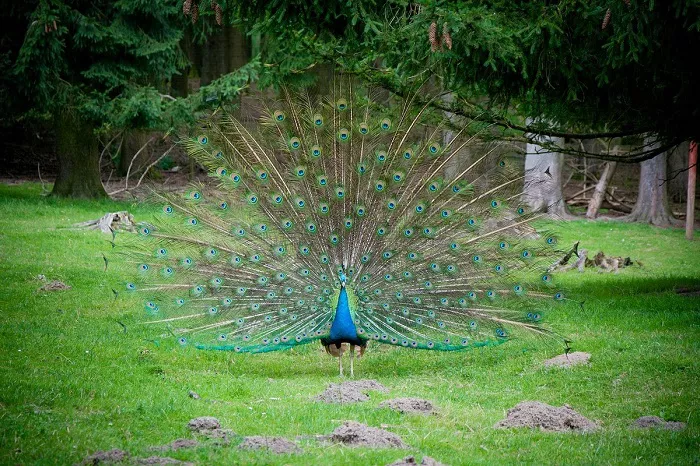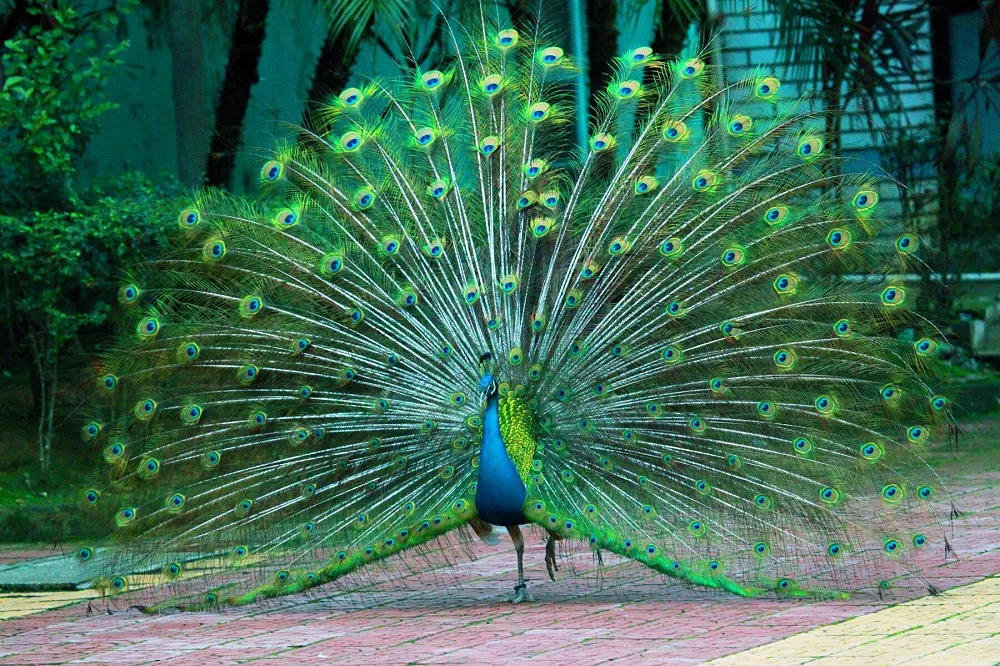The national bird of India is the peacock (scientific name: Pavo cristatus), Also known as the Indian peacock, a majestic and iconic bird known for its resplendent beauty and graceful presence. Recognized for its vibrant plumage and distinctive courtship display, the peacock holds a special place in Indian culture, folklore, and history. This article delves into the significance of the peacock as India’s national bird and explores its characteristics, habitat, and cultural importance.
History and Significance
The peacock has been an important part of Indian culture and mythology for centuries. In Hindu mythology, Lord Krishna is often depicted wearing a peacock feather in his hair, symbolizing his divine and powerful nature. The peacock is also associated with Saraswati, the goddess of knowledge, music, and the arts.
The choice of the peacock as the national bird of India was made in 1963, based on its importance in Indian culture and its widespread presence across the country. The Indian peafowl can be found in various parts of India, from the Himalayan foothills to the southern peninsula. It is also widely kept in captivity for ornamental purposes.
The Indian peafowl’s Characteristics:
The Indian peafowl belongs to the pheasant family, and is known for its striking appearance and distinct features. The male peacock is larger than the female, and boasts an impressive display of feathers during mating season. These feathers are adorned with iridescent blue-green “eyes” that shimmer in the sunlight, making the peacock a truly mesmerizing sight.
The peacock’s feathered train, which can span up to six feet long, is used to attract a mate during courtship rituals. The male peacock fans out his feathers in a showy display, while emitting a loud call to attract females. The female, or peahen, chooses her mate based on the quality of his display, and the pair bonds for life.
Aside from their stunning appearance, peafowl are also known for their loud and distinctive calls. The male’s call is a loud honking sound that can be heard from great distances, while the female’s call is more of a high-pitched squawk.

Peacock spreads its tail
Habitat and Distribution:
Peafowls are native to the Indian subcontinent and can be found in various parts of the country. They inhabit a diverse range of habitats, including forests, grasslands, and agricultural landscapes. Peafowls are adaptable birds and can thrive in both rural and urban environments. They are well-suited to the Indian climate and are known for their ability to withstand heat and monsoon rains.
Cultural and Symbolic Significance:
The peacock holds great cultural and symbolic significance in India. It has been revered for centuries and is associated with various aspects of Indian mythology, religion, and art. In Hinduism, the peacock is considered a sacred bird and is closely associated with the deity Lord Krishna, who is often depicted with a peacock feather adorning his crown. The peacock’s beauty and grace have also inspired numerous Indian classical dance forms, where performers imitate the bird’s movements and display.
Selection as India’s National Bird:
The Indian peacock was officially declared as the national bird of India on January 26, 1963. The selection of the peacock was influenced by its cultural significance, widespread presence across the country, and its representation of India’s rich biodiversity. The peacock’s selection as the national bird highlights the country’s commitment to preserve its unique wildlife heritage and promote environmental conservation.
Conservation Status and Threats:
While the peacock is considered the national bird of India, it also faces conservation challenges. The destruction of natural habitats, illegal hunting, and the use of peacock feathers for commercial purposes pose threats to their population. Efforts are being made by the Indian government and conservation organizations to protect and conserve the peacock’s habitat, raise awareness about its conservation, and enforce laws against hunting and trading of its feathers.
Conclusion:
The Indian peacock, with its resplendent beauty, cultural significance, and representation of India’s diverse wildlife, holds a special place as the national bird of India. Its presence in Indian folklore, mythology, and art showcases the deep-rooted admiration and reverence Indians have for this magnificent bird. By conserving the peacock’s habitat and ensuring its protection, India strives to safeguard its natural heritage and promote the importance of biodiversity conservation.
Related topics:
- Guatemala’s National Bird: Resplendent Quetzal
- Costa Rica’s National Bird: The Clay-Colored Thrush
- Canada’s National Bird: The Common Loon
- Mexico’s National Bird: The Golden Eagle
- What is Australia’s National Bird? (All You Need To Know)


 Facebook
Facebook  Instagram
Instagram  Youtube
Youtube 